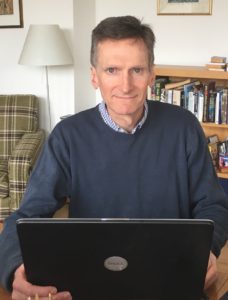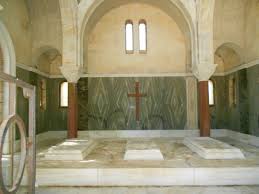28 January 2021
Three Palaces
Through the keyhole.
By Neil Tidmarsh
 Three palaces in the news this week – let’s play ‘Through the Keyhole’ and see if you can guess who lives in them.
Three palaces in the news this week – let’s play ‘Through the Keyhole’ and see if you can guess who lives in them.
First, a neo-classical pleasure dome on Russia’s sunny Black Sea riviera. Less than ten years old, but with all the luxury and grandeur of the country’s tsarist past. This sprawling edifice has been described as “more like a city” than a single building; it apparently has its own theatre, spa, zoo, ice-hockey rink and club room (equipped with what looks like hookah pipes and a dance pole). All rooms are furnished to the highest standard (a single lavatory brush reportedly cost £600, and one leather sofa reportedly cost 20 million roubles – almost £200,000 – which would buy you a two-bedroomed flat in Russia with change left over).
Idyllically situated near the coast and picturesque sea cliffs (an underground passage provides direct and private access to the sea), it’s surrounded by its own woods, vineyards and oyster farms. Its extensive grounds (7000 hectares – almost 40 times bigger than Monaco) guarantee complete seclusion and privacy. Not to mention security; some of those grounds are owned by the FSB (Russia’s federal security service) and the place is said to have its own port, permit system, border check-point and no-fly zone.
So, who owns this highly desirable slice of real estate? Who was it built for? Who might live here?
Easy, you say. After all, the video which has been show-casing this palace on YouTube for the last week – courtesy of Alexei Navalny and his FKB anti-corruption organisation – has had almost a hundred million hits already. And Mr Navalny well and truly points the finger at President Putin. The place was built for Mr Putin, claims Mr Navalny from his Moscow prison cell, by the president’s mates and business associates with 100 billion roubles (getting on for £1 billion) allegedly funnelled from state funds and other illicit sources.
But the Kremlin says that Mr Putin “doesn’t own palaces”, and the president himself said that nothing which the video claims is his property “belongs to me or my close relatives and never did.”
Second – we travel further down the Black Sea coast and across the border into Georgia. There, on a hilltop overlooking the capital Tbilisi, stands a starkly modernist – indeed futuristic – palace of steel and glass. No neo-classicism here, no throwback to nineteenth-century imperialist grandeur, but 108,000 square feet and £36 million of what looks from the outside like a cross between a multi-storey car-park and a shopping centre. But inside there is a swimming pool, a shark tank, an art collection packed with works by modern masters, and a helipad.
So, who lives here? Who flies in and out by helicopter to feed the sharks, enjoy a swim (presumably the shark tank and the swimming pool aren’t connected) and peruse his Picassos, Monets and Freuds?
Bidzina Ivanishvili – the man who has supervised the running of the country from this palace in recent years. No, Mr Ivanishvili is not the king of Georgia. No, he isn’t its president. No, he isn’t exactly its prime minister either. He’s a billionaire oligarch who made a fortune in finance and commodities in Russia twenty years ago, founded the Georgian Dream political party ten years ago, won the general election eight years ago, but resigned as prime minister only a year later.
He was in the news this week because he announced, in an open letter and in an interview with The Times, that he is leaving politics, withdrawing from public life and giving away his fortune. Already reclusive, it seems that he is now pulling up the drawbridge of his palace once and for all.
It isn’t entirely clear what his position in politics or public life was; according to The Times, “he denied allegations that he had in effect ruled the country from behind the scenes for the past seven years, but said he recognised his influence was extensive”. Neither is it entirely clear from the report in The Times what his fortune is, how much he is giving away, who he is giving it away to or how much is left. Forbes has estimated his fortune at £3.5 billion (which equals a fifth of the country’s GDP – the average monthly wage in Georgia is £270), but he says that he had only £1.1 billion before he started giving it away and now has only £150 million left. His philanthropy will presumably be directed towards the Cartu Foundation, the charitable organisation he founded in 1995 to support the development of Georgia.
Third, and last, we cross the Black Sea and the Aegean to Greece. Here, at Tatoi, outside Athens, we find a palace on a hill in the middle of a 12,000 acre estate. The palace isn’t new, it isn’t splendidly neo-classical, it isn’t strikingly futuristic – it’s a nineteenth century Gothic edifice built of stone. The doors are bolted shut, the windows are boarded over, the building is falling into decay. The estate is abandoned and overgrown.
No one lives there now, but who did live there? Who did own it, and who owns it now?
It was home to King Constantine until 1967, when he fled Greece and was stripped of his throne and property (including two other palaces) following an unsuccessful attempt to overthrow the military junta. The Greek royal family had owned it since 1872. It was in the news this week because the government has just announced plans to turn the estate into environmentally-sound organic farms and to restore the building as a museum. The project is budgeted at €130 million, but the culture minister admits that “it is a hugely ambitious project” and that sustaining it will be “an even bigger challenge” than creating it.

The former monarch, now 80 years old, returned to Greece from exile in 2013. Decades of negotiations with the Greek government have failed to settle the question of compensation for his family’s loss of the palace and estate at Tatoi; he has, however, been allowed to reclaim some of the crown jewels (including a collection of Faberge eggs) which the state has apparently hidden away in a secret vault somewhere. And he will be returning to Tatoi to take up permanent residence sooner or later – he plans to be buried in the royal family’s private cemetery there.

